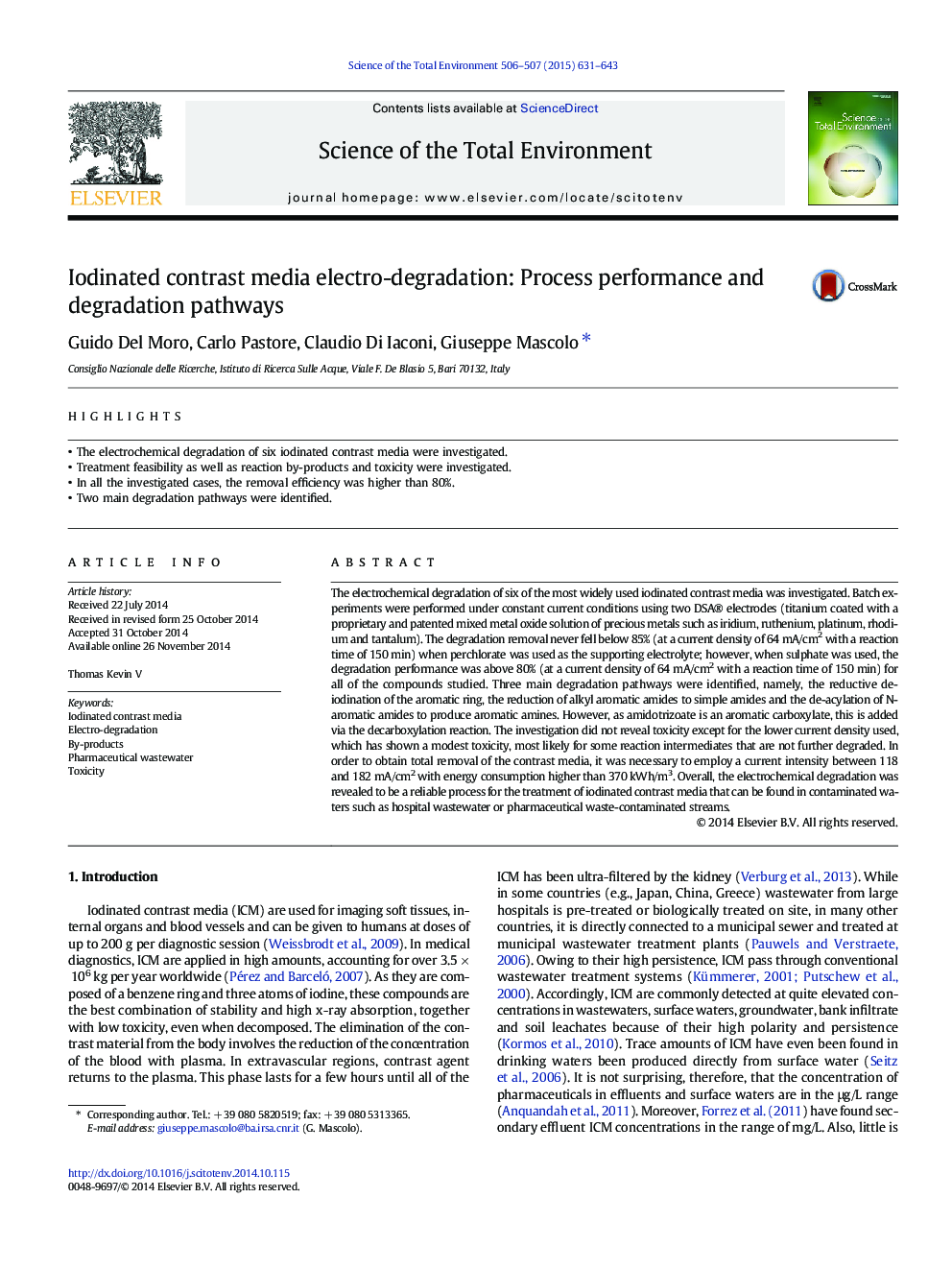| Article ID | Journal | Published Year | Pages | File Type |
|---|---|---|---|---|
| 6327814 | Science of The Total Environment | 2015 | 13 Pages |
Abstract
The electrochemical degradation of six of the most widely used iodinated contrast media was investigated. Batch experiments were performed under constant current conditions using two DSA® electrodes (titanium coated with a proprietary and patented mixed metal oxide solution of precious metals such as iridium, ruthenium, platinum, rhodium and tantalum). The degradation removal never fell below 85% (at a current density of 64Â mA/cm2 with a reaction time of 150Â min) when perchlorate was used as the supporting electrolyte; however, when sulphate was used, the degradation performance was above 80% (at a current density of 64Â mA/cm2 with a reaction time of 150Â min) for all of the compounds studied. Three main degradation pathways were identified, namely, the reductive de-iodination of the aromatic ring, the reduction of alkyl aromatic amides to simple amides and the de-acylation of N-aromatic amides to produce aromatic amines. However, as amidotrizoate is an aromatic carboxylate, this is added via the decarboxylation reaction. The investigation did not reveal toxicity except for the lower current density used, which has shown a modest toxicity, most likely for some reaction intermediates that are not further degraded. In order to obtain total removal of the contrast media, it was necessary to employ a current intensity between 118 and 182Â mA/cm2 with energy consumption higher than 370Â kWh/m3. Overall, the electrochemical degradation was revealed to be a reliable process for the treatment of iodinated contrast media that can be found in contaminated waters such as hospital wastewater or pharmaceutical waste-contaminated streams.
Related Topics
Life Sciences
Environmental Science
Environmental Chemistry
Authors
Guido Del Moro, Carlo Pastore, Claudio Di Iaconi, Giuseppe Mascolo,
